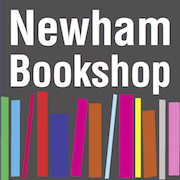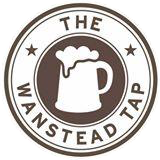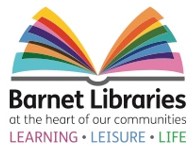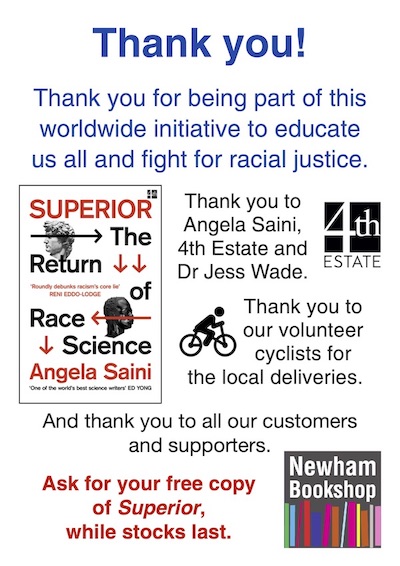The French sports newspaper L’Équipe reports on The Champions statue in a series on English football statues
Arm-wrestling for bronze
Four statues erected near the former West Ham stadium, representing the world champions in 1966, have not ceased to provoke controversy – and longing – over the last fifteen years.
Article by Pierre-Étienne Minonzio, published 31 December 2018. Translated in Newham.
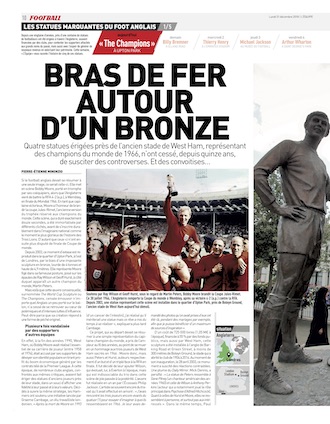
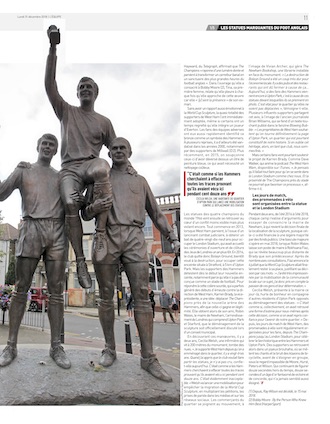
If English football were to be summed up in a single image, it would be this one. It features Bobby Moore, carried in triumph by his teammates, after England beat Germany 4-2 (penalties) at Wembley in the 1966 World Cup final. As victorious captain, Moore had the honour of brandishing the Jules-Rimet Cup, the old version of the trophy reserved for world champions. This scene, which lasted exactly twelve seconds, was immortalised by various pictures, before becoming a permanent part of the national imagination as the most glorious moment in the history of the Three Lions. Especially as they haven’t played in a World Cup final since.
Since 2003, this moment of ecstasy has been reproduced in the Upton Park area of east London through an imposing bronze sculpture, four tons in weight and 4.9 metres high. It represents Moore frozen in his famous posture, placed on the shoulders of Ray Wilson and Geoff Hurst, with another world champion, Martin Peters, beside them.
But now this consensual work, nicknamed The World Cup Sculpture or The Champions, supposed to move any Englishman with a liking for football, has continued to be at the heart of polemics and intense struggles of influence. Perhaps because its creation responds to a form of original sin.
Indeed, in the late 1990s, West Ham – where Bobby Moore had achieved most of his playing career (between 1958 and 1974) – was accused by its supporters of misusing its popular identity by taking advantage of the economic boom generated by the television contracts of the Premier League. At that time, many English clubs, faced with the same criticisms, had statues of former players erected near their stadium, in order to display a fidelity to their past and their values. Determined to follow the same strategy, the Hammers supported an initiative launched by Graeme Cambage, a Newham Labour councillor. “After Moore’s death in 1993 [from cancer of the intestine], I realised he deserved a statue, but this dream took a long time to come true,” Cambage explained later.
This project, which was originally intended to be a simple representation of the captain of the world champions, grew over the years, to the point of becoming a tribute to the three 1966 winning players of West Ham: Moore, but also Peters and Hurst, who respectively scored a goal and a hat-trick against Germany in the final. It was decided to add Wilson, who was playing for Everton at the time, but who is inseparable from the trio in this scene of joy passed on to posterity. The work was done in one year by the Scot Philip Jackson. The artist still remembers the work he had done in preparation: “I met the three players of the quartet who were still alive, to try to imagine what they looked like in 1966. I asked them for photos that had been taken of them that summer, during weddings for example, so that I could benefit from a maximum of sources of inspiration.”
At a cost of £725,000 pounds (€1.05 million at the time), financed 55% by public funds, but also by West Ham, this sculpture was installed at the corner of Barking Road and Green Street, less than 300 metres from the Boleyn Ground, the stadium that housed the club from 1904 to 2016. At the time of its inauguration, on 28 April 2003, this monument has generated mixed reactions. A writer for the Daily Mirror, Mick Dennis, joked, “The Peters statue looks like Gene Pitney (an American singer of the 1960s) and that of Wilson to Anthony Perkins (actor who notably starred in Alfred Hitchcock’s Psycho). As for those of Hurst and Moore, they do not look like anyone, and especially not like their models.” At the same time, Paul Hayward, of The Telegraph, affirmed that The Champions “shines with a golden light and manages to turn a banal crossroads into a sanctuary of the greatest hours of English football” In the book* she wrote about Bobby Moore, Tina, his first wife, relates that she cries every time she approaches this work because she “feels the presence” of her ex-husband.
Vandalized several times by supporters of other teams
Without having as emotional a connection to the World Cup Sculpture, almost all West Ham supporters immediately adopted it, although at times some have regretted that it includes an Everton player. Fans of opposing teams have also quickly identified this bronze as a symbol of the Hammers. On several occasions, it was also vandalised in the 2000s, including by supporters of Millwall (D2). More recently, in 2015, they are suspected of having spilled a litre of blue paint on the statue, which required an expensive clean-up operation.
The statues of the four 1966 world champions would then find themselves at the heart of a less visible but more violent conflict. It all started in 2013, when West Ham managed, after a painful court fight, to get a ninety-nine-year lease to occupy the London Stadium, which had hosted the opening and closing ceremonies of the London Olympic Games a year earlier. In 2016, the club left the Boleyn Ground, soon destined for destruction, to occupy this compound located in Stratford, 5km from Upton Park. But the Hammers fans hated their new location from the start, especially because it was not designed as a football stadium. To respond to this anger, which has sometimes spawned riots against the West Ham leadership, Karren Brady, the vice president, had an idea: move The Champions to the new Hammers arena, so that it would gain legitimacy. She then obtained from her friend, Sir Robin Wales, the mayor of Newham, the London borough which includes Upton Park and Stratford, that the move of the sculpture be officially discussed at a council meeting.
“It was as if the Hammers were trying to erase all the evidence that they had lived here for one hundred and twelve years.” – Cecilia Welsh, a resident of Upton Park who launched a campaign against moving the statues.
In discovering these manoeuvres, two years ago, Cecilia Welsh, a nurse who lives 200 metres from the monument, was flabbergasted. “I have supported West Ham since moving to the area twenty-three years ago. When I heard that the club wanted to take the statues away, I did not believe it,” she says today. “It was as if the Hammers were trying to erase any evidence that they had lived here for a hundred and twelve years. It was obviously unacceptable.” Welsh launched a campaign to prevent the move of the World Cup Sculpture, by starting petitions, speaking in the media and on social networks. Shopkeepers in the neighborhood joined the movement, like Vivian Archer, who runs Newham Bookshop, which is opposite the monument. “The destruction of Boleyn Ground has been a very hard blow to the local economy. There are pubs and restaurants that had to close because of that… Today, if Hammers fans still come to Upton Park, it’s because of these statues – they take pictures in front of them. It’s vital for the area that they are not removed,” she says. Several influential supporters share this view, like former journalist Brian Williams, who wrote a touching article published in the fanzine Blowing Bubble: “Much as the present owners of West Ham would like us to forget all about Upton Park, it is central to our history. Lose touch with our heritage and we are finished as a club.&rqquo;
But some fans did support Karren Brady&squo;s project, like Dave Walker, who hosts the podcast The West Ham Wam, available on iTunes. “I thought we had to do everything to make London Stadium feel like home. And the proximity of The Champions near the stadium could only encourage this process,” he says.
For two years, from the summer of 2016 to the summer of 2018, each side was competing with arguments to try to convince Newham Council, which has the final decision on the location of the sculpture, since it was financed more than 50% by public funds. A major swing occurred in May 2018, when Sir Robin Wales was superseded as mayor by Rokhsana Fiaz, who is much more distant from Brady than her predecessor. After many consultations, Fiaz announced on 4 July 2018 that the World Cup Sculpture would finally stay in its place, justifying the decision with these words: “I have been massively impressed with the community’s strength of feeling about this matter and I recognise people’s passion and determination.“
On match days, bike rides are organized between the statue and the London Stadium.
Cecilia Welsh, present at the town hall that day, screamed with happiness in the company of other residents of Upton Park opposed to the move of the statues: “It was as if, collectively, we had found a form of self-esteem after this decision, as if we had regained confidence for the future of our neighbourhood.” Since then, on West Ham match days, there have been regular bike rides for fans, from The Champions to the London Stadium, to celebrate the historic connection between the Hammers and Upton Park. Supporters meet up in a happy hubbub, where the songs and the sound of bicycle horns mingle, before moving away as a group, under the impassive gaze of Moore, Hurst, Peters and Wilson. They continue to be twelve seconds outside time, twelve seconds of a fantasy golden age of victory and concord, which has never seemed so far away.
